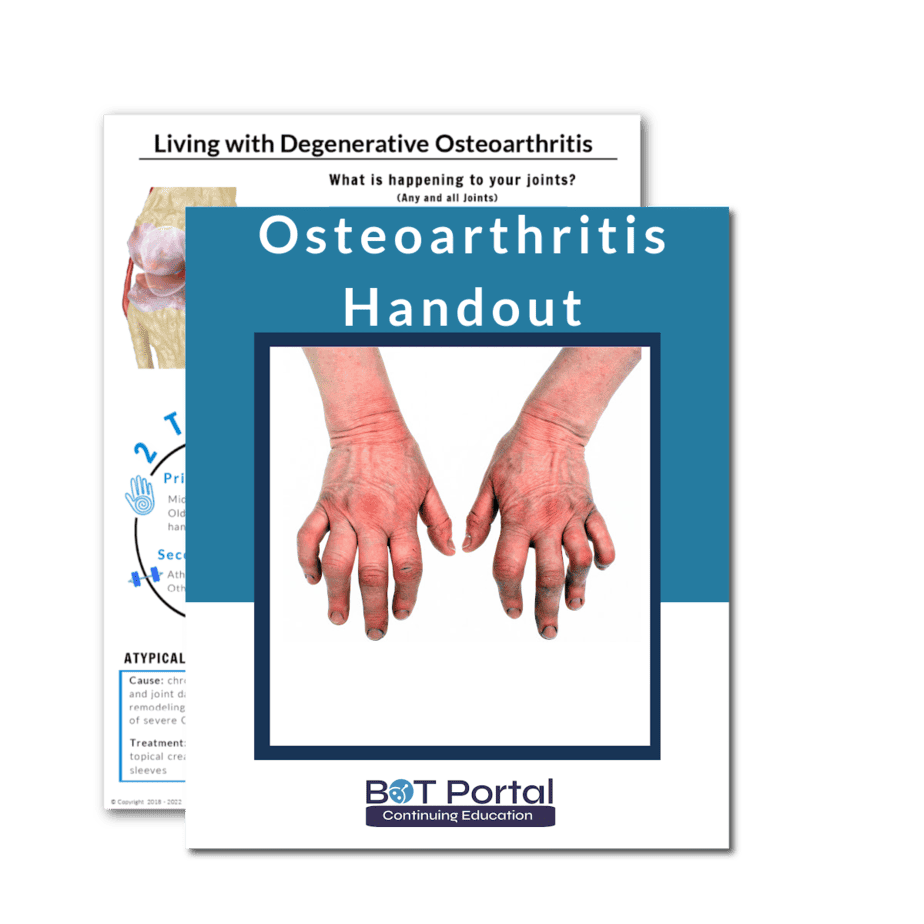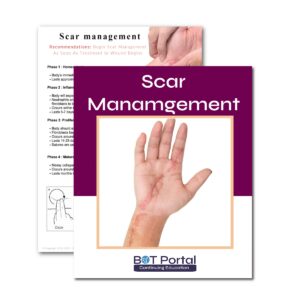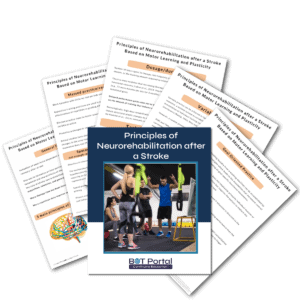Description
Degenerative Osteoarthritis
Download the pdf for “Degenerative Osteoarthritis” to educate your patients on their diagnosis of osteoarthritis and the implications thereof. As a practitioner, this PDF is an invaluable reminder of important concepts to remember during rehabilitation (especially concepts like avoid repetition of exercises).
This PDF helps you to educate your patient (health management) on the following concepts:
- What is osteoarthritis
- What are the types
- Action steps
- Deformities associated with arthritis
More Information:
Degenerative osteoarthritis, often referred to simply as osteoarthritis (OA), is a chronic joint condition characterized by the gradual breakdown of cartilage in the joints. This progressive degeneration leads to symptoms such as pain, stiffness, swelling, and decreased range of motion, impacting individuals’ ability to perform daily activities.
Osteoarthritis commonly affects weight-bearing joints such as the knees, hips, and spine, as well as joints in the hands, wrists, and feet. The exact cause of osteoarthritis is multifactorial and may involve a combination of genetic predisposition, aging, joint trauma, obesity, and repetitive stress on the joints over time.
As cartilage wears away, bones may begin to rub against each other, resulting in pain and inflammation. Over time, osteophytes, or bone spurs, may develop around the edges of the affected joints, further contributing to pain and stiffness.
The symptoms of osteoarthritis can have a significant impact on individuals’ quality of life, affecting their ability to perform activities of daily living, work, and leisure activities. In addition to physical symptoms, osteoarthritis can also lead to emotional distress and social isolation.
Treatment for degenerative osteoarthritis aims to relieve pain, improve joint function, and enhance overall quality of life. This may include a combination of non-pharmacological interventions such as exercise, physical therapy, weight management, and joint protection techniques, as well as pharmacological treatments such as analgesics, anti-inflammatory medications, and intra-articular injections.
In more advanced cases of osteoarthritis where conservative measures are ineffective, surgical interventions such as joint replacement surgery may be considered to alleviate pain and improve joint function.
Occupational therapists play a crucial role in the management of degenerative osteoarthritis, working with individuals to develop personalized treatment plans to address their specific needs and goals. Occupational therapy interventions may focus on teaching joint protection techniques, providing adaptive equipment and assistive devices to facilitate daily activities, and implementing strategies to conserve energy and reduce pain during tasks.
By addressing the physical, emotional, and functional aspects of osteoarthritis, occupational therapists help individuals with degenerative osteoarthritis optimize their independence, improve their quality of life, and maximize their participation in meaningful activities.
Other helpful links:
Check out BOT Portal: Resource Site for Occupational Therapy Students and Practitioners




